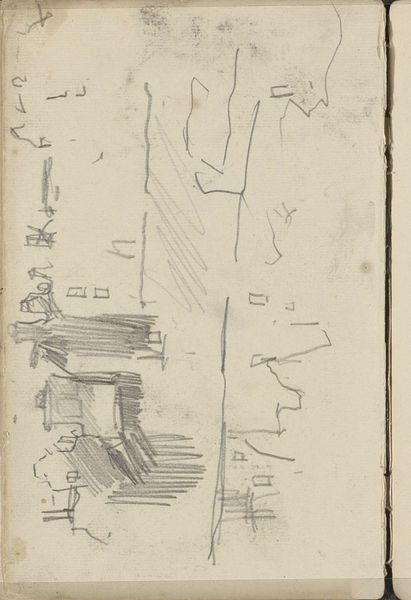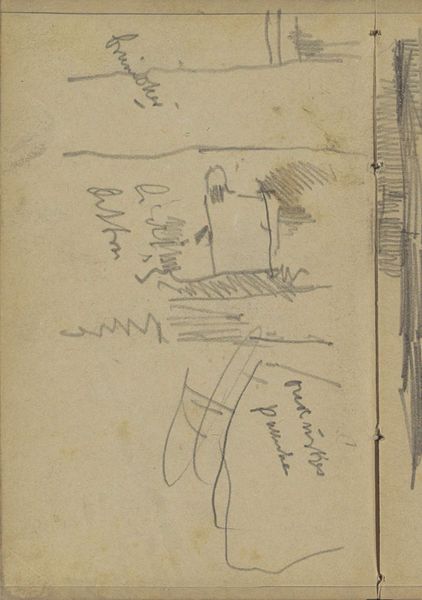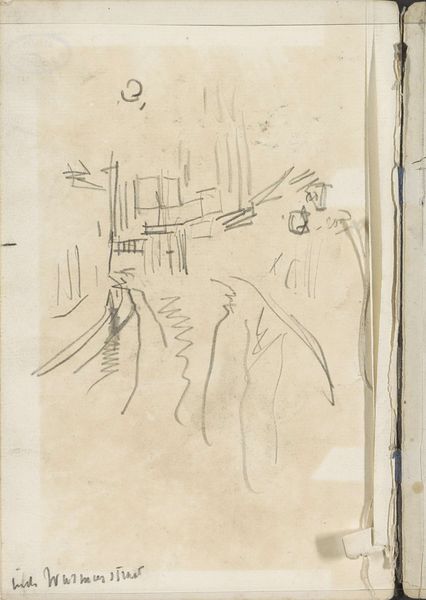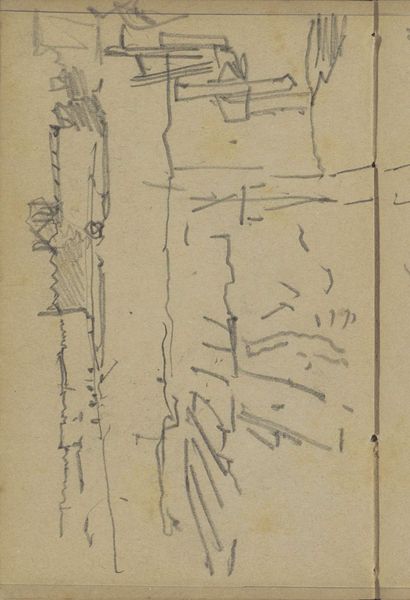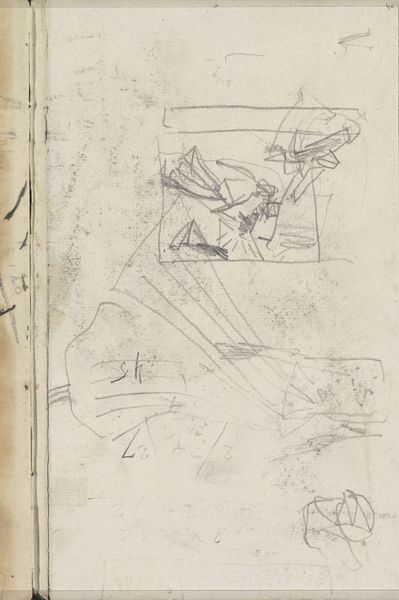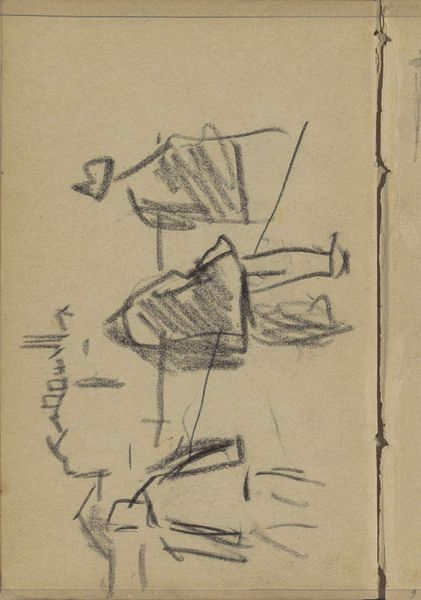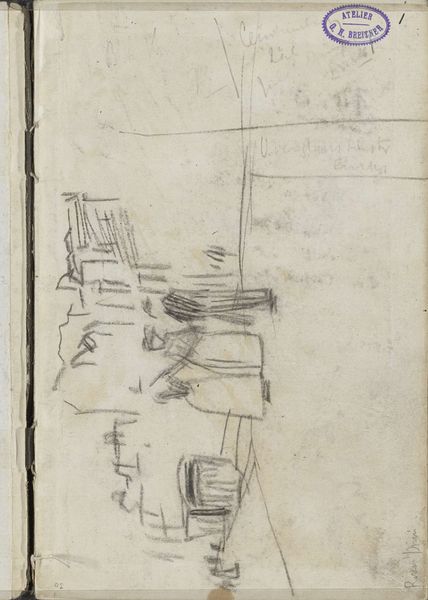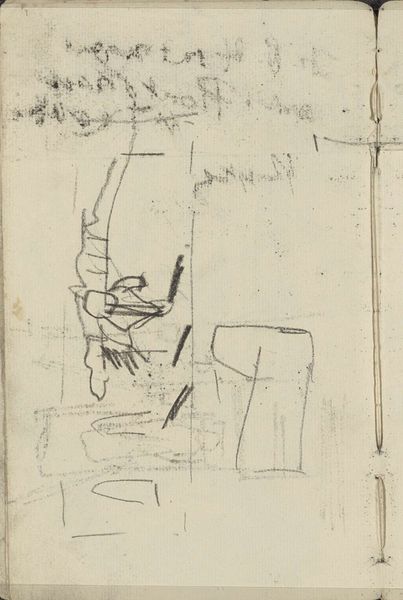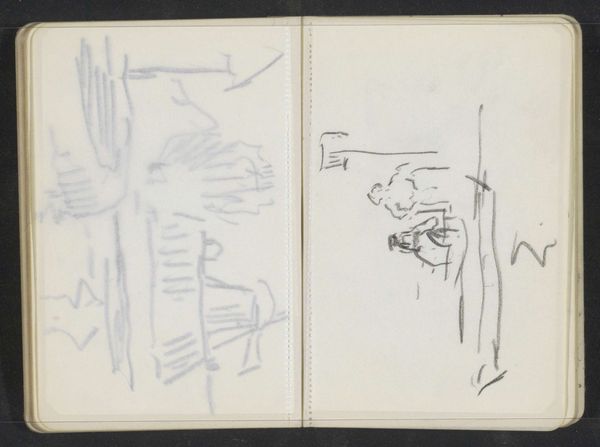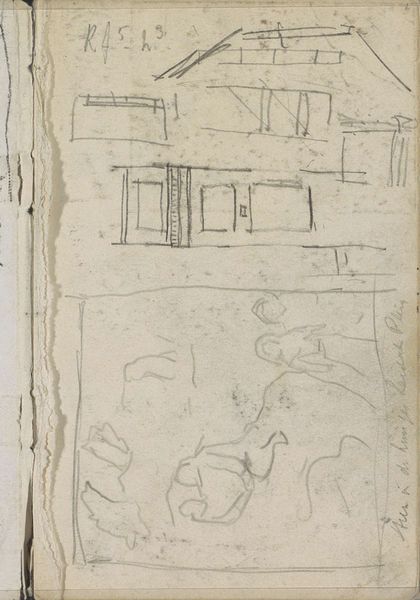
Dimensions: height 167 mm, width 128 mm
Copyright: Rijks Museum: Open Domain
Curator: George Hendrik Breitner's pencil drawing, "Faces in Amsterdam with Horses," created around 1897, offers a fleeting glimpse into city life at the turn of the century. It resides here in the Rijksmuseum's collection. Editor: Gosh, it's so faint! Like a half-remembered dream. The horses are there, alright, but barely... ghost horses, you could say, wandering through a cityscape that's more suggested than drawn. Curator: That 'unfinished' quality is very much a characteristic of Breitner's work. His art captures fleeting moments, eschewing idealization in favor of representing lived reality, focusing particularly on the working class and marginalized communities. This piece might reveal a city still reliant on horsepower. It portrays the socioeconomic strata deeply ingrained in urban fabric. Editor: Absolutely, but you feel the speed! Like he dashed this off while perched on a wobbly cafe chair. The whole thing vibrates with energy, even in its unfinished state. It is almost like witnessing the artist’s own process as he’s figuring out composition and mood. It is exciting, and I love the handwritten notes beneath each drawing! Curator: The hurried marks become more intentional, if we place this drawing in context with prevailing debates around art and social representation in Breitner's era. Artists were compelled to acknowledge urban development, poverty, class differences, and industrial transformations. This piece becomes a study on working animals whose labor and livelihoods were also affected by those changes. Editor: It definitely prompts you to imagine the clip-clop of hooves on cobblestone, the cries of street vendors. More than that, these quick sketches—the ones up top read 'Guel,' perhaps for a person or place—evoke my own memories of Amsterdam: The misty mornings, the canals, the sheer pulse of urban living. I agree with you on how they represent a very specific class! Curator: Precisely! It reminds us that landscapes and cityscapes aren't simply visual records—they’re complex palimpsests of labor, economy, and history. By capturing these ephemeral moments, Breitner asks us to contemplate the relationships between people, animals, and the urban environment that shapes them. Editor: And it reminds us that sometimes, the most evocative stories are told with the fewest lines. A sketch, a whisper, a ghost horse... Beautiful.
Comments
No comments
Be the first to comment and join the conversation on the ultimate creative platform.
